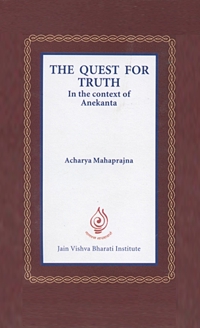
The perspective of religion towards life is fundamentally different from the perspective of economics towards life. Religion defines life in terms of the development of the consciousness. Economics defines life in terms of economic activity. These definitions do not share a similar foundation or perspective. Therefore religion does not accept economics nor does economics accept religion. Yet they co-exist in life and there is an intersection of the two at some points. They influence each other too.
Bhagvan Mahavira said, "Conquer desire happily." Desire cannot be quenched as fire is with water nor can it be satiated. Increase in wants, increase in objects contributes to increase in production and effort. But to believe that they contribute to peace and happiness is fallacious. It is true that increase in wants results in improvement in the standard of life, but to maintain that it results in improvement of the levels of peace and happiness is not true. A religious man is also a social being. Therefore, it is, that he is not able to completely give up those categories of wants that are deemed necessary or basic.
Mahavira did not advocate to the householder to give up these things. On the basis of the thought that a religious man should give up indulging in luxury items, one can draw the limiting boundary of limitation of cravings.
It is necessary to fulfil those wants that are deemed necessary and basic, but equally important, alongside, is to exercise restraint over the need or desire for luxury items. This way the door to economic progress and a higher standard of living is not closed nor is the door to progress taking place on the proliferation of luxury consumption kept open.
According to economics the categorization of wants as necessary, comfort-giving and luxury is done on the following basis:
Items are categorized on the basis of the satisfaction-dissatisfaction quotient. If on the consumption of a particular item there is satisfaction and if on refraining from its consumption there is dissatisfaction, then we call this a necessary consumption. But if the resultant satisfaction from the consumption of a particular item is far greater than normal and the loss of satisfaction is minimal then it is called an item that gives comfort. If the satisfaction derived from consumption is much greater than normal and refraining from it does not give dissatisfaction (except in as far as it is a withdrawal of a habit) then that item is categorized as a luxury item. If consumption of any item results in short lived satisfaction and refraining from it gives immense happiness, then the item is categorized as wasteful consumption.
The categorization of items on the basis of the satisfaction-dissatisfaction they give can be understood from the following table:
Man's influence on satisfaction-dissatisfaction levels:
| Objects | On its consumption | On refraining from its consumption |
| Necessities | Little satisfaction | Immense dissatisfaction |
| Comforts | Extra satisfaction (those which give satisfaction) | Little loss of satisfaction |
| Luxury items | Lots of satisfaction | No dissatisfaction |
From the perspective of economics, morality and peace are non-existent. The challenge facing economics is that of betterment of human existence through economic progress. On this basis it supports the consumption of luxury items and thinks it is necessary for economic progress. From the perspective of a religious teacher the challenge of economic progress does not arise. Morality and peace are his important goals.
 Acharya Mahaprajna
Acharya Mahaprajna


